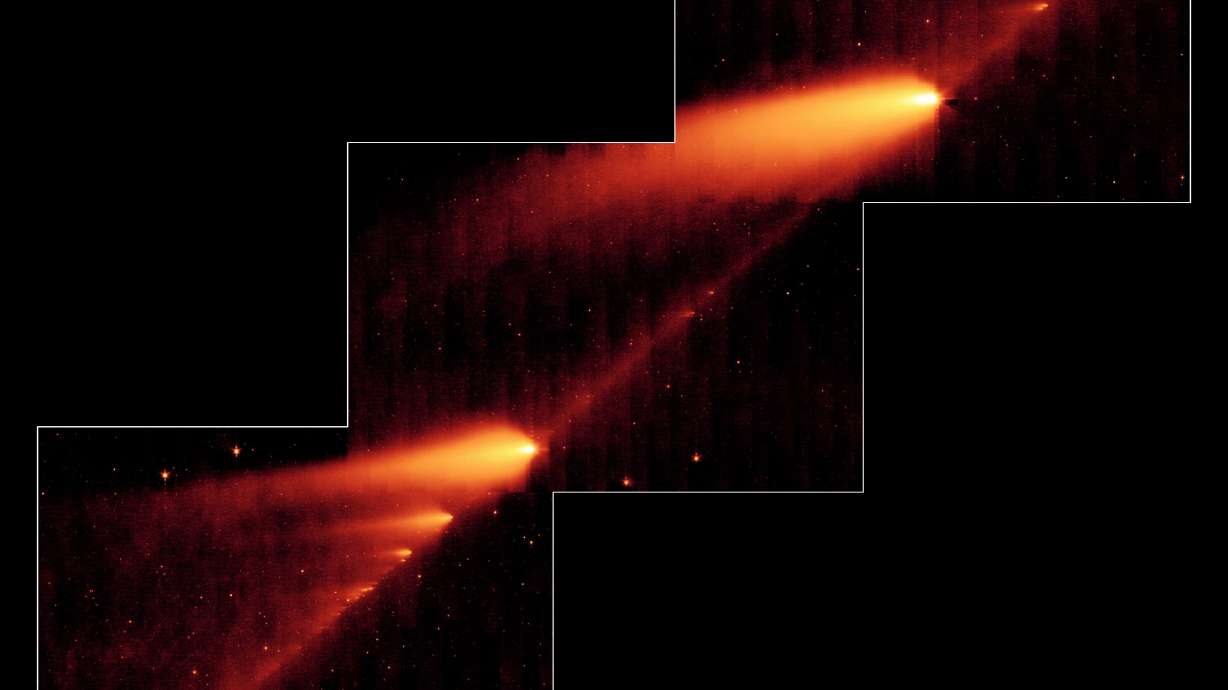Estimated read time: 4-5 minutes
This archived news story is available only for your personal, non-commercial use. Information in the story may be outdated or superseded by additional information. Reading or replaying the story in its archived form does not constitute a republication of the story.
SALT LAKE CITY — Patience might pay off for stargazers Monday night, as a new meteor shower with the potential of lighting up the sky in a dramatic fashion may appear.
Astronomers suspect the material from a small comet, SW3, may cause a significant meteor shower, called the Tau Herculids, which will peak around 11 p.m. Monday, according to space.com.
Space.com columnist Joe Rao indicates the shower may have the intensity of stronger annual meteor showers. These showers are known to produce up to a hundred meteors per hour, as indicated in a rundown of 2022 meteor showers by the same space blog.
As an added bonus, there is a small possibility the Tau Herculids could whip itself up to a larger meteor outburst or storm, where thousands of meteors per hour could be seen streaming out of the night sky, Rao explains in his article.
However, all models and forecasts could come to naught and the night sky could remain dark Monday night into Tuesday morning. It all depends on the timing of Earth's and Comet SW3's orbits.
Patrick Wiggins, a local astronomer and NASA/JPL Solar System Ambassador to Utah, said that if the Tau Herculids reaches its full potential, the resulting display would rank among the most powerful meteor storms in history. Rao compared the best-case scenario to the Leonid Meteor showers 20 years ago.
No one can tell for certain what will happen, though. A recent blog post by NASA is more conservative, not even indicating a storm as a possibility.
Wiggins calls the potential for a storm a "big if." Yet that won't dissuade him from watching.
"The only thing certain is I'll be watching," he said.
The possibility of a shower
Meteor showers happen when Earth encounters a swarm of debris left behind by a comet.
In a journal article for the International Meteor Organization on the 2022 Tau Herculids shower, Rao wrote that by 11 p.m. Mountain Monday, Earth will cross paths with SW3's orbit just ahead of the comet itself. This seemed to make the possibility of any meteor activity in 2022 nonexistent.
However, with more modeling, Rao determined that it is possible for SW3's cloud of debris to be traveling ahead of the comet, just enough to produce a shower. Two other studies support his findings, he writes.
What's more, Rao points to a similar comet breakup in the early 1800s, which resulted in the Andromedid meteor storms of 1872 and 1885. Rao's paper suggests that the similarities between these two comets could support a tau Herculids storm forecast.
Notes for watching
If you plan to watch, Rao suggests the following the normal protocol for viewing a meteor shower: warm clothing and a hot drink to combat the chill, a reclining chair to support your neck, and a red flashlight to preserve your night vision.
Meteor shower names are usually formed after the point in the sky from which meteors radiate, usually a constellation. When discovered in 1930, the Tau Herculids were expected to radiate from the constellation Hercules, Rao's paper said.
Today, the radiant will be closer to the constellation Bootes. To find this constellation, locate the handle of the Big Dipper and arc your vision toward the first bright star you see: Arcturus, the brightest star in Bootes.
You do not need to look directly at the radiant to see meteors in a shower. Science writer and former Hansen Planetarium director Mark Littman wrote a book on the Great Leonid meteor storms of the 19th century, in anticipation of the 1998 and 1999 showers, entitled "The Heavens on Fire." In this book, he explains that looking away from the shower's radiant will actually allow you to see longer tails.
If a storm happens, though, and thousands of meteors do rain down, looking directly at the radiant will give the illusion of flying through space, similar to a Federation Starship on the TV series "Star Trek," Littman illustrated.
Rao cautions that since the expected meteors will be catching up to Earth on Monday night, they will also appear fainter, making a dark sky imperative. He adds that an eventual storm would be "short-lived; not more than several hours."
And of course, the weather is the ultimate factor in any astronomical event.
"Watch the skies," Wiggins said, borrowing from the old sci-fi adage. "Everywhere. Keep looking. Keep watching the skies."










